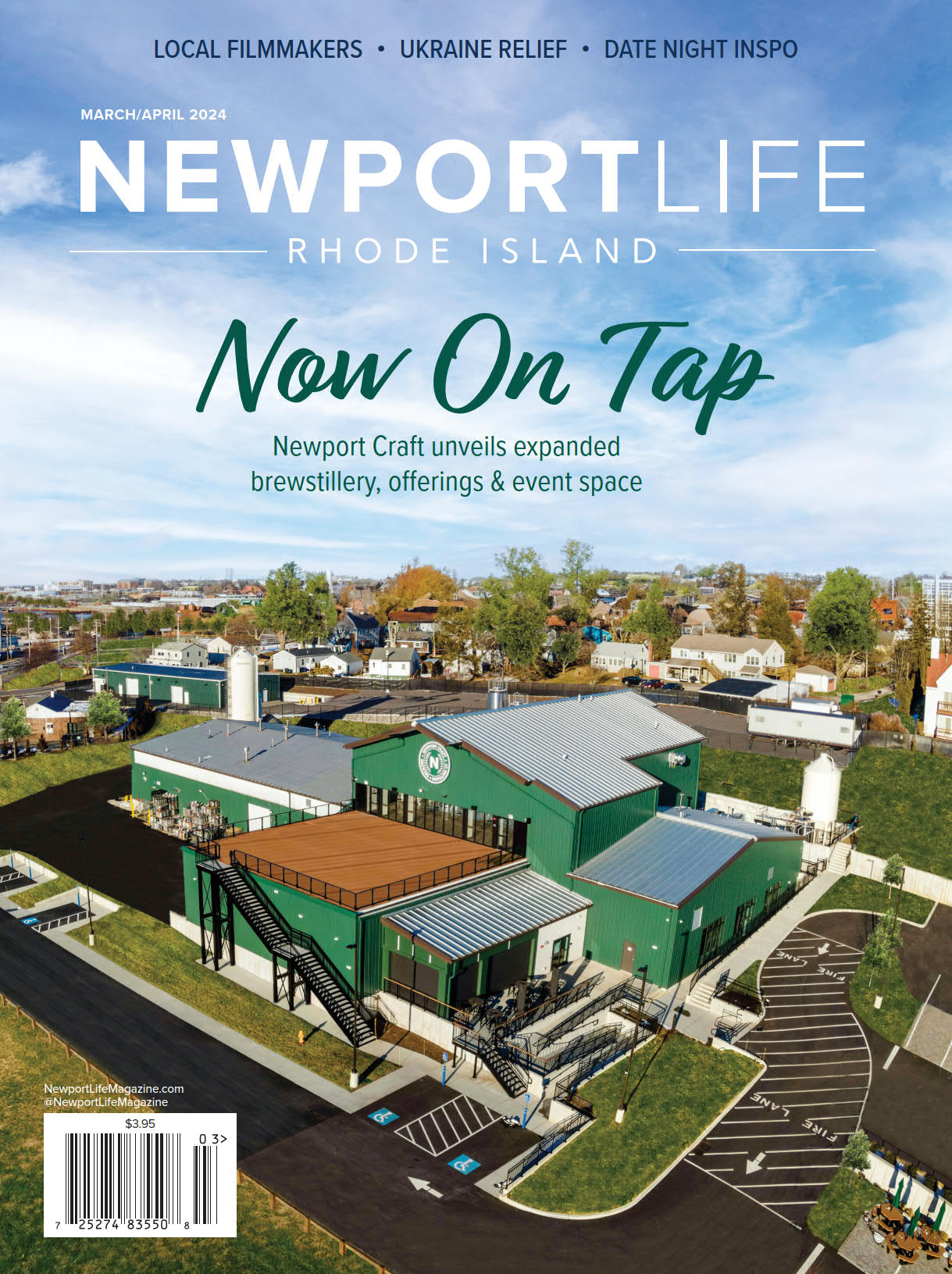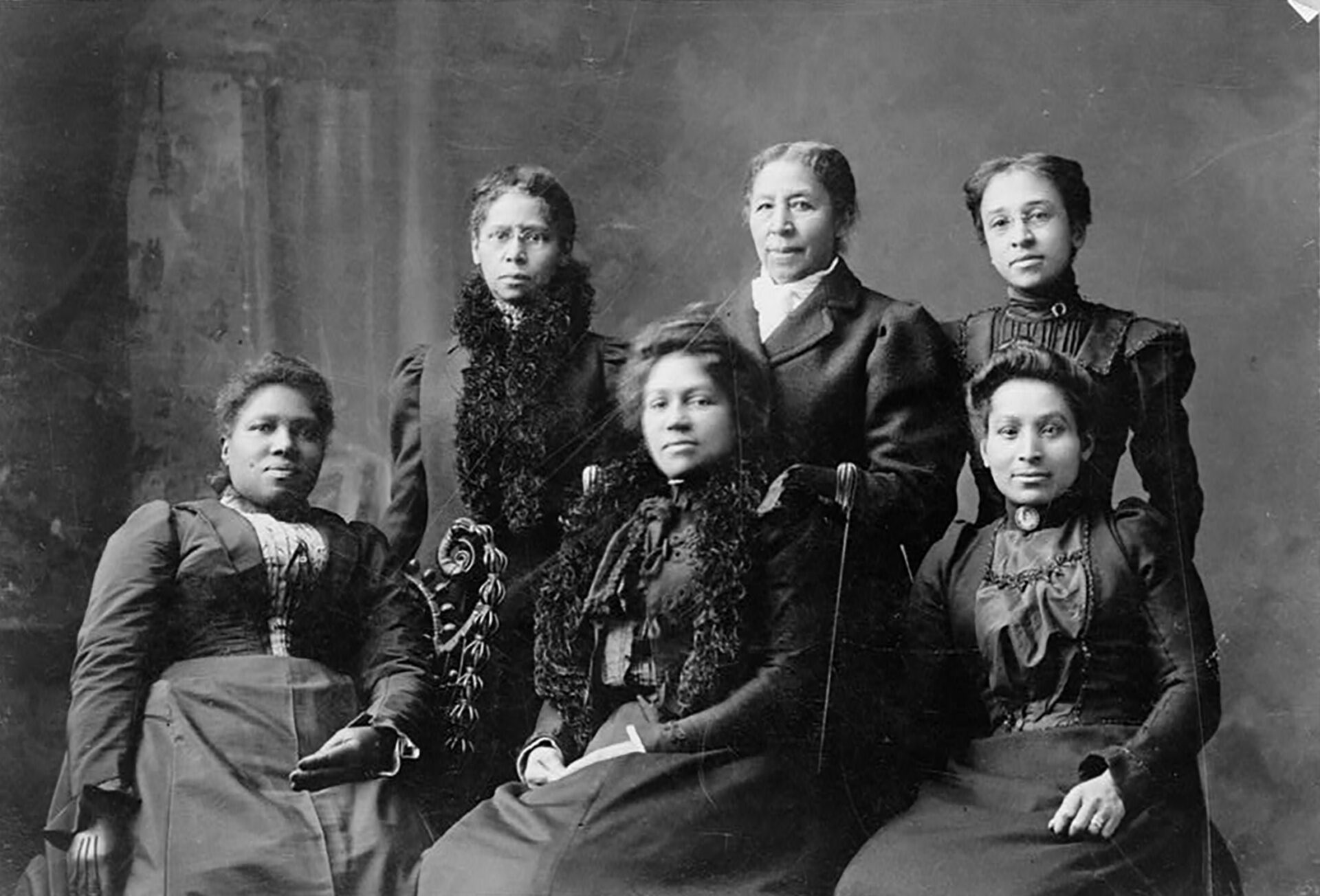300-YEAR NEWPORT AFRICAN HERITAGE TIMELINE (1639-1939)
By Keith Stokes
This timeline is a digital supplement to a story in the January/February 2023 issue of the print magazine, which features “The Story of Newport: An African Heritage Perspective” by Keith W. Stokes.
1639 – Newport settlement is established on the southern end of Aquidneck Island.
1640 – Dr. John Clarke grants land to the Town of Newport to establish a Common Burying Ground for all residents regardless of race, creed, and class.
1652 – Colony of Rhode Island adopted a law abolishing African slavery, where “black mankinde” could not be indentured for more than ten years. The law is largely ignored.
1674 – Colonial Governor William Brenton (1600-1674) owned a large farm area encompassing not only the present-day Brenton Point but also Castle Hill, Hammersmith Farm, and Fort Adams. As an early slaveholder, he includes in his November 13,1674 will the following:
“Unto my Negro Abraham four pounds
Unto my Negro Antonia forty shillings
Unto my Negro Rose thirty shillings
Unto my Negro Zipporah twenty shillings
Unto my Negro Samson twenty shillings
Unto my Indian Edom twenty shillings
In the case of my Negroes Abraham and Antonia demean themselves obedient at the expiration of five years after my decease be set free and shall give them five pounds.”
1696 – The first documented slave ship, the Boston-bound “Sea Flower” arrives in Newport.
1703 – Rhode Island General Assembly adopts an early “Negro Code” to restrict activities of free and servant Negros and Indians, stating, “If any negroes or Indians either freemen, servants, or slaves, do walk in the street of the town of Newport, or any other town in this Colony, after nine of the clock of night, without certificate from their masters, or some English person of said family with, or some lawful excuse for the same, that it shall be lawful for any person to take them up and deliver them to a Constable.”
1705 – A section of the Common Burying Ground is established to bury Negros. It is later known to the African heritage community as “God’s Little Acre.”
1709 – A duty of three pounds was placed on every Negro imported into the colony.
1741-1763 – Several of Newport’s most important civic structures, Old Colony House, Redwood Library, Brick Market, and Touro Synagogue, were built with the participation of enslaved and free African skilled labor.
1750-1780 – Hundreds of Africans in Newport are converted to Christianity as part of the Great Awakening Religious Movement sweeping across American Colonies. Trinity Church and First and Second Congregational Churches lead the conversion activities.
1756 – Newport Africans begin to assemble each June at corners of Thames and Farewell Streets to elect a “Negro Governor” – a mixture of European and African traditions. This West African tradition is also seen in Boston, Providence, Portsmouth, NH, and Connecticut.
1768 – Signed by “A True Son of Liberty,” an article appears in the Newport Mercury Newspaper under the caption, “If you say you have the right to enslave Negroes, because it is for your interests, why do you dispute the legality of Great Britain enslaving you?”
1774 – Africans John Quamino and Bristol Yamma are sent to study at the College of New Jersey (the future Princeton University) to train as Christian Missionaries. These will be the first Africans to attend college in America. The plan is devised by Reverends Samuel Hopkins and Ezra Stiles of Newport.
1776 – American Revolution begins.
Rev. Samuel Hopkins of First Congregational Church in Newport authors “A Dialogue Concerning the Slavery of Africans” which he presents to the Continental Congress, stating slavery is incongruous with the ideals of American civil and personal liberty.
1778 – The 1st Rhode Island Regiment was reformed, including 132 enslaved and free African and Indigenous men. Later to be called the “Black Regiment,” they fought with great valor in the Battle of Rhode Island in August 1778.
1780 – A group of free African men met in the Levin Street home of Abraham Casey and formed the Free African Union Society, the first such society in America.
1787 – Anthony Taylor, President of the African Union Society, sends letters promoting the return to Africa by free Africans in Newport. In the letter, Taylor describes the situation for Africans in Rhode Island as “strangers and outcasts in a strange land.”
1792 – African Charity “Duchess” Quamino dies in Newport; recognized as the “Pastry Queen of Rhode Island” and one of the most successful African women entrepreneurs of her time. Reverend William Ellery Channing inscribes her marker within God’s Little Acre.
1800 – Five free Africans owned homes on a section of Pope Street between Spring and Thames streets referred to as “Negro Lane.”
1803 – Former enslaved African Occramar Marycoo, aka Newport Gardner, becomes the first published African musical composer in America; songs include “Crooked Shanks” and the religious anthem “The Promise.”
1808 – In March, the Free African Benevolent Society of Newport established one of the earliest African schools (private) in America on School Street.
1809 – The Free African Female Benevolent Society is established in Newport with founding members including Obour Tanner and Sara Lyna.
1812 – During the War of 1812, free African Hannibal Collins of Newport, along with other African sailors, were present at the Battle of Lake Erie under the command of Newport Commodore Oliver Hazard Perry.
1820 – John Mowatt was one of Newport’s earliest African heritage entrepreneurs owning a grocery store and real estate at 83 Division Street. He is a founding member of the Free African Benevolent Society and Union Congregational Church and helped to organize the first Masonic Lodge of color in Newport.
1824 – The Free African Benevolent Society evolved into the Union Colored Congregational Church housed in the old Baptist Meeting House on Division Street.
1826 – On January 4th, led by Occramar Marycoo, aka Newport Gardner, and Salmar Nubia, aka Jack Mason, a group of Newport Africans set sail for Africa, settling in Liberia. The entire party dies of coastal fever within one year.
1842 – At the November session of the General Assembly of Rhode Island meeting at Newport, the Rhode Island Constitution was revised and ratified, giving African heritage men, among others, the right to vote.
1845 – The Mt Zion African Methodist Episcopal Church was organized on Johnson Court, later relocated to Bellevue Avenue.
1845 – One of Newport’s most successful 19th-century entrepreneurs, Benjamin F. Burton, arrived in Newport from Connecticut. He would establish the “Original Express” company, one of the earliest Black-owned businesses operating in various forms at 4 Travers Block along Bellevue Avenue. During the summer resort season, he also ran a baggage transfer business transporting luggage from the steamships along the waterfront to the summer estates along Bellevue Avenue.
1846 – In The summer of 1846, African American businessman George T. Downing opens a restaurant on Bellevue Avenue in Newport to cater to the emerging summer resort market.
1850 – George T. Downing built the Sea Girt Hotel along a Bellevue Avenue commercial block that would bear his name.
1860 – Isaac Rice’s Williams and Thomas Street home is used as an Underground Railroad stop.
1863 – Newport and Providence African heritage leaders begin a movement to fully integrate public schools in Rhode Island by 1868.
1865 – Thomas G. Williams arrives in Newport, the son of Domingo Williams, a leading caterer and abolitionist leader in Boston’s Beacon Hill community. Thomas would establish a series of successful catering businesses and become a civil rights leader in Newport and Rhode Island.
1866 – Dr. Harriet A. Rice was born to George and Lucinda Rice in Newport. She graduated as a top student at Newport’s Rogers High School and, in 1882, became the first African heritage student to graduate from Wellesley College in 1887. Soon after, she earned a medical degree at the University of Michigan Medical School. During WWI, she was a physician serving the French Army.
1868 – The Shiloh Baptist Church is organized in the home of Ester Brinley on Levin Street and relocates to the former Trinity Church School House on School Street.
1869 – Rev. Mahlon Van Horne assumes the pastorate of Union Colored Congregational Church on Division Street in Newport.
1870 – The Fifteenth Amendment to the United States Constitution was ratified, prohibiting the restriction of voting rights “on account of race, color, or previous condition of servitude.”
1872 – Rev. Van Horne becomes the first African heritage member of the Newport School Board.
1875 – St John’s Episcopal Church in Newport is founded at the Point Neighborhood home of African heritage Peter Quire.
1873 – A major event is hosted on Thanksgiving Evening by leading political and business leaders to promote sending a Newport delegation to the 1873 Colored Convention in Washington, DC. Participating leaders include Benjamin Burton, Thomas Williams, and Rev. Van Horne.
1877 – Josephine Silone Yates was the first African heritage student to graduate from Rogers High School. She graduated as valedictorian of the class of 1877. She graduated in 1879, with honors, from the Rhode Island Normal School, and she was the first African heritage person certified to teach in the schools of Rhode Island.
1881 – Andrew J. Tabb arrived in Newport as part of the staff of Newport socialite Madame C. O’Donnell. Within several years, he established one of the city’s most extensive livery stables and coaching services at 28 Edgar Court, serving the summer residents’ transportation needs.
1882 – The Daisy Tonsorial Parlor is established at 148 Bellevue Avenue by African heritage business and civic leader Fredrick E. Williams.
1883 – On October 15th, the Supreme Court declared the Civil Rights Act of 1875 unconstitutional and declared that the Fourteenth Amendment forbids states, but not citizens, from discriminating.
1885 – Rev. Van Horne of Newport becomes the first African heritage member of the General Assembly of Rhode Island.
1885 – George T. Downing is a committee member responsible for the Bellevue Avenue extension to Bailey’s Beach in Newport.
1890 – J T Allen and his brother David arrived in Newport and soon established the Hygeia Spa at Easton’s Beach and dining facility in the Perry Mansion on Touro Street.
1892 – Over 160 documented African American lynchings in America, the highest annual total in history.
1894 – The Mt. Olivet Baptist Church was organized and occupied 79 Thames Street by 1897. Pastor William James Lucas organized the Newport NAACP through the church in 1919.
1895 – Dr. Marcus Wheatland became the first known African-heritage physician to live and practice in Rhode Island. Dr. Wheatland was nationally recognized as an early radiology specialist.
1896 – United States Supreme Court issued Plessy v. Ferguson ruling that “separate but equal” facilities satisfy Fourteenth Amendment guarantees, thus giving legal sanction to Jim Crow segregation laws.
1897 – President William McKinley appoints Rev. Van Horne of Newport to become U.S. Consul to St. Thomas in the Danish West Indies, serving through the Spanish American War.
1897 – Newport-born Dr. M. Alonzo Van Horne graduated from Howard Medical School and became the first African heritage dentist in Newport, practicing at 47 John Street and later at 22 Broadway.
1898 – The Senator Charles Sumner Political Club is formed by George T. Downing, Charles Fayerweather, Dr. Mahlon Van Horne, and others to advance African heritage political rights in Newport and Rhode Island.
1899 – Women’s League Newport members meet, led by Mary H. Dickerson, who owns a dress shop on Bellevue Avenue.
1900 – Charles Frederick Douglas Fayerweather and his wife Ella were the African heritage power couple in 19th and early 20th century Newport. Charles operated a prosperous blacksmith shop and lived on Pearl street. At the same time, Ella was a dressmaker and leader in the Colored Women Clubs movement.
1902 – Louisa Van Horne is appointed as the first African heritage teacher at a public school in Newport.
1905 – Madame C. J. Walker, the first African heritage women millionaire, comes to Newport to present a lecture on “The Possibilities of Negro Woman in Business.”
1905 – Armstead Hurley would establish a successful painting business and be a founding partner in the Rhode Island Loan & Investment Company, the first black-owned bank in Rhode Island.
1915 – Dr. Cromwell P. West establishes a Pharmacy on Caleb Earl Street.
1919 – The Newport Branch of NAACP is established at the Mt. Olivet Baptist Church; the founding members include Dr. Mahlon Van Horne, Cromwell P. West, Armstead Hurley, and D. B. Alen.
1927 – Cromwell P. West organizes and is the first President of the “Old Hometown Tennis Club.” The first tennis courts are in the backyard of Mt. Olivet Baptist Church.
1930 – Dr. Marcus Wheatland, Oliver Burton, and Dr. Cromwell West are appointed to the reception committee for Sir Thomas Lipton and the American Cup Races in Newport.
1930 – William H. Jackson of Newport, the State House Sergeant At Arms, presents an Anti-Lynching platform to the Republican National Convention.
1933 – Martin Canavan is chairman of the Newport Colored Men’s Democratic Club. The club is an outspoken critic of the lack of patronage support for Negros by the Republican Party locally and nationally.
1939 – The Negro Motorist Green Book is launched that year. African heritage entrepreneurs Nellie Brown and Thomas Glover are long-time operators of guest homes for summer workers and visitors of color along Brinley Street within the Top of the Hill neighborhood.





